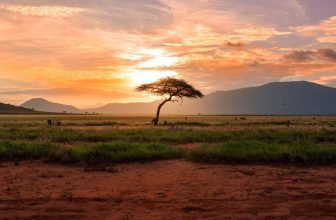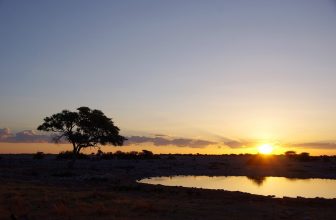Hey, you cool cats and kittens. The world of big cats can be a confusing place, unless you’re Carole Baskin, in that case, you could probably spend hours talking about the differences between a cheetah and a leopard. But, we are looking at the differences between the spots of these two big cats.
Coming on a safari in Africa, you will have the chance to witness both of these predators in the wild. Or experience a leopard embrace their inner sloth casually relaxing in a tree. But how would you be able to tell if you’re looking at a leopard or a cheetah?
The easiest way, apart from the relaxing in trees aspect, is their spots. This article will give you some help when you’re on your next African safari and make sure you don’t mistake one big cat for another.
What’s the Difference Between a Cheetah and a Leopard?
Apart from the name, cheetahs and leopards are both ace predators and share quite a lot in common with one another. These large mammals are the hunters of the bush. They can be pretty terrifying, but beautiful at the same time. Let’s explore the differences between the spots of a cheetah and a leopard.
Cheetah
Probably the most famous of the two, cheetahs are known for being the fastest land mammal in the world, reaching incredible speeds. This probably makes it a little harder to take a moment to look at their spots closely, but it is still possible.
The main role of the spots on a cheetah is to help it blend into its surroundings. This camouflage helps this cat to stalk its prey and makes it an effective hunter. This blending in with surroundings also helps the cheetah cubs hide from lions and hyena predators. Along with containing spots, the fur itself grows into a mantle. Giving it the appearance of blades of grass so it can stay more easily hidden.
Cheetah Spots
Cheetahs have a few distinctive spots that would make them stand out from a leopard. A cheetah spot is a black solid, round and polka-dot type spot that is normally around 2-3cm (0.79-1.2 inches) across. Their undercoat ranges in colour from a light tan to a much deeper golden colour, a stark contrast for their black spots to stand out on.
They don’t have any spots on their soft white underbelly, but their tail is a different story. Their tail ends in a large bushy white tuft that starts with spots. But these eventually all merge towards the end of their tail to form four to six dark rings at the end. This gives them amazing camouflage and their tail is also thought to be a signaling device, a flag for their cubs to follow through long grass. The tip of the tail can also vary in colour from white to black.
Another distinctive ‘spot’ but not actually a spot, is a feature on their face where they have black tear lines that look like they are running from the corners of their eyes. These run down their face along the slides of their nose to their mouth. This is thought to protect their eyes from the sun’s glare, allowing them to focus on their prey from a longer distance with the reduction in glare.

Leopard
A popular print for those into the latest fashion trends. But leopards are another member of the big cat family and a close cousin to a jaguar. The leopard has a number of ways that make it stand out from a cheetah, its behavior being the most distinctive. But, when all else fails, leopard spots will be the easiest way to discern a cheetah versus a leopard.
In Africa, you get black panthers but its scientific name is a ‘melanistic leopard’ and if you look closely at them in daylight, you will see the same distinct leopard spots. This dark fur is thought to be a genetic mutation or evolutionary trait to improve the leopard’s ability to blend in while hunting at night.
Leopard Spots
Leopards have more distinct spots when compared to cheetahs, but they also earn their spots so to speak. leopards are born without any distinctive spots, only a dark grey/denim blue fur coat with barely visible spots. These will develop as it grows older into the more distinct spot pattern of leopards.
Their spots make them distinct given the shape of them, called rosettes. These spots are named after the rose petal-like shape that they develop into as a leopard grows older. The famous combination of the golden coat and black spotted coat is also known as a leopard complex gene among other species. Such as the giant leopard moth, named after the leopard style of spots on its wings.
These patterns that they develop as they grow are unique to each leopard. Think of a leopard’s coat like a human fingerprint, unique and identifiable to that person only. The pattern of spots, as well as their brown, tan and yellow colours allow them to blend into a savannah habitat.
Although they may not have distinct features as the cheetah does, these rosette patterns make them unique in their own way.
Leopard vs Cheetah – Can you Tell the difference?
When it comes to a cheetah versus leopard comparison, this little guide should help you to now be able to ‘spot’ these breathtaking animals when out on safari. Don’t forget to take photos of all the leopards you see, give them a name and you might see them again. Remember, they are all unique so you would be able to see that leopard you named last time.
If you’re new to the world of safari’s and looking to learn as much as you can before your first time in the bush then this guide to the best safari in Africa for first timers will be a great help.
So, what are you waiting for? Try out this safari and enjoy the moments and memories that you create along the way.








